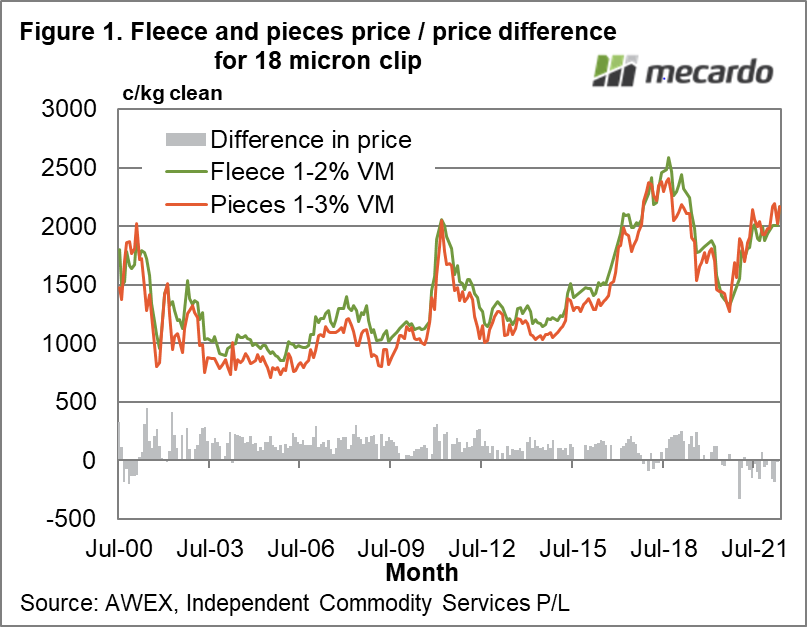One of the consequences of extreme micron premiums and discounts is the inversion of price relativities for the different wool categories which make up a fleece. This article looks at these price relativities over the past 22 years.
The different components of a fleece (the main fleece itself, pieces, bellies, locks and the various permutations of these lines) have different physical attributes which impact their processing potential, which is why they are separated for sale. The most obvious characteristics that differ are staple length, vegetable fault, yield and fibre diameter. All things being equal fleece is more valuable than pieces which are more valuable than bellies which in turn are more valuable than the cardings, locks and crutchings.
As noted above, between categories within a fleece all is not equal. Table 1 shows the median difference in the Australian merino clip between wool categories for the past decade. The upper row shows the category micron difference to the overall merino clip average fibre diameter, while the lower line re-sets the differences to the fleece category. Table 1 shows that pieces are generally 1.2 microns finer than fleece while bellies are 0.58 microns finer, locks are nearly a micron finer and crutchings have the same fibre diameter as fleece.
To put this into practice Figure 1 shows an eastern price series for 18.2 micron merino fleece and 17.2 micron merino prices (the gap between the fleece and pieces was narrowed to one micron by the inclusion of weaner fleece with the adult fleece) running from mid-2000 to May 2022. In addition the difference in price between the two series is shown in the lower section of the graph.
For the 22 year period the median price difference between the fleece and pieces series has been 125 cents per clean kg (about 10% in price). During this period the finer pieces price has been higher than the fleece price for 12% of the time during three separate periods, namely in 1999-2001, briefly in 2017 and for a longer period, since early 2021.
The article earlier this week which looked at fine micron carding prices noted the marked increase in finer micron prices. This recent increase in micron premiums also has had an effect on the relative price for locks and bellies from a fleece, with locks occasionally trading at higher levels through 2021, keeping in mind locks tend to be 0.4 micron finer than bellies.
What does it mean?
The challenge to interpreting market signals is to discern between the transient and the structural. Higher prices for your pieces than your fleece is a cyclical phenomenon which we have seen before in the market. It reinforces the need to ensure adequate care is taken in the preparation and packaging of the minor categories of wool as they are valuable.
Have any questions or comments?
Key Points
- The 1 to 1.2 micron difference in fibre diameter between pieces and fleece within a sheep’s fleece makes the prices line relatively more valuable at present.
- This inversion in per kg value is a function of the steep micron premiums and discounts operating in the greasy wool market which is a cyclical phenomenon rather than a structural change.
Click on figure to expand
Click on figure to expand
Data sources: AWEX, ICS, Mecardo



